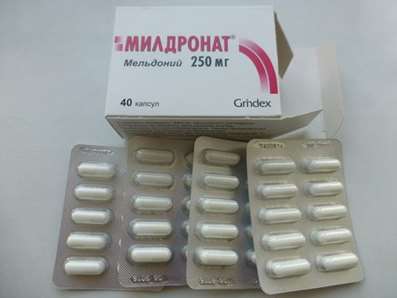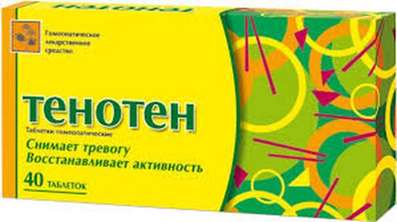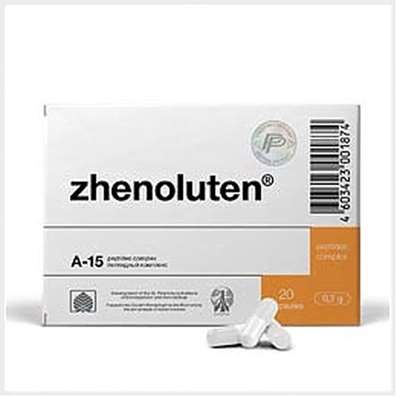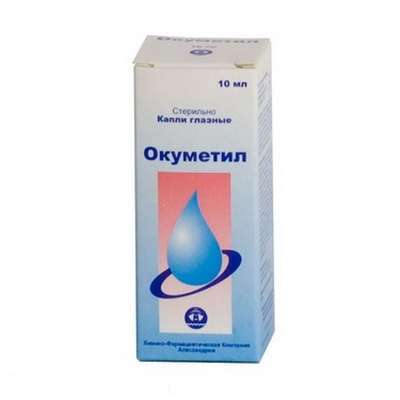Instruction for use: Medazepam
I want this, give me price
The Latin name of the substance Medazepam
Medazepamum (genus. Medazepami)
Chemical name
7-Chloro-2,3-dihydro-1-methyl-5-phenyl-1H-1,4-benzodiazepine (as hydrochloride)
Gross formula
C16H15ClN2
Pharmacological group:
Anxiolytics
The nosological classification (ICD-10)
F10.2 Syndrome of alcohol dependence: Alcoholism; Alcohol addiction; posiomania; Dependence on alcohol; dipsomania; drunken state; alcohol abuse; Ideatornoy violations in alcoholism; Quarterly booze; Obsessive craving for alcohol; Neurotic symptoms of alcoholism; Craving for alcohol; Psychoorganic syndrome in chronic alcoholism; Reduced craving for alcohol; chronic alcoholism
F10.3 Abstinence: Alcohol withdrawal syndrome; Abstinence syndrome; Abstinence syndrome with alcoholism; Abstinence; Alcohol abstinence; Alcohol withdrawal status; Alcohol withdrawal syndrome; Postabstinctive disorder; Post-abstinence condition; Hangover syndrome; Abstinence syndrome; Alcohol abstinence syndrome; Alcohol withdrawal syndrome; Abstinence condition
F41.9 Anxiety disorder, unspecified: Neurotic disorders with anxiety syndrome; Severe anxiety; Neuro-like symptomatology; Neuro-like disorders; Neuro-like conditions; Neuroses with anxiety symptoms; Neuroses with a sense of anxiety; Acute situational and stress anxiety; Acute attack of anxiety; Severe Anxiety; Situational Anxiety Disorder; State of anxiety; Anxious and delusional component; Alarming state; Anxiety; Anxiety Disorders; Anxiety syndrome; Sense of anxiety; Alarm conditions; Chronic neurotic anxiety; Susto; Psychopathy with a predominance of anxiety and anxiety; Anxiety disorders in neurotic and neurosis-like states; Anxious neuroses; Anxious and delusional state; Acute situational stress alarm; Depressed mood with elements of anxiety
F43.2 Adverse Reactions Disorder: Mental Adjustment Disorder
F45 Somatoform disorders: Psychosomatic disorder; Psychosomatic disorders; Psychosomatic diseases; The state of excitement in somatic diseases; Functional psychosomatic disorders of the cardiovascular system
F48 Other neurotic disorders: Neurosis; Neurological diseases; Neurotic disorders; Neurotic condition; Psychoneurosis; Anxious-Neurotic Conditions; Chronic neurotic disorders; Emotional reactive disorders
F60 Specific personality disorders
F60.3 Emotionally unstable personality disorder: Mood swings; Mental lability; Emotional fence; Emotional detachment; Mood Change; Lability of mood; Instability of emotional background; Mixed emotional disorders; The state of emotional stress; Emotional lability; Emotional tension; Emotional instability; Emotional instability; Mood disturbance; Mood disorders; Decreased mood; Deterioration of mood; Mood swings
G43 Migraine: The pain of migraine; Migraine; hemiplegic migraine; Migraine headache; A migraine attack; Continuous headache; hemicranias
G47.0 Disorders of falling asleep and maintaining sleep [insomnia]: Insomnia; Insomnia, especially difficulty falling asleep; desynchronosis; Prolonged sleep disturbance; Difficulty falling asleep; Short-term and transient insomnia; Short-term and chronic sleep disorders; Short or shallow sleep; Violation of sleep; Disturbed sleep, especially in the phase of falling asleep; Infringements sleep; sleep disturbances; Neurotic sleep disturbance; Shallow superficial sleep; shallow sleep; Poor quality of sleep; Night awakening; sleep Pathology; Postsomnic violation; transient insomnia; Trouble falling asleep; Early awakening; Early morning awakening; Early awakening; sleep disorder; somnipathy; persistent insomnia; difficult to fall asleep; difficulty falling asleep; Difficulty falling asleep in children; persistent insomnia; Worsening sleep; Chronic insomnia; Frequent night and / or early morning awakening; Frequent nocturnal awakening and a sense of the depth of the non-sleep; Night waking
N95.1 menopausal and menopausal status of women: Atrophy of the mucosa of the lower genital tract, caused by estrogen deficiency; Vaginal dryness; Autonomic dysfunction in women; gipoestrogeniya state; Deficiency of estrogen in menopausal women; Degenerative changes of the mucous membrane in the menopause; Natural menopause; an intact uterus; climacteric; Menopause women; Menopause in women; menopausal depression; Climacteric ovarian dysfunction; Menopause; Climacteric neurosis; Menopause; Menopausal symptoms complicated psychovegetative; Climacteric syndrome; Climacteric vegetative disorders; Climacteric psychosomatic disorder; menopausal disorders; Menopausal disorders in women; menopausal condition; Climacteric vascular disorders; Menopause; Menopausal vasomotor symptoms; menopausal period; Lack of estrogen; Feeling the heat; Pathological menopause; perimenopause; menopause; postmenopausal; Premature menopause; premenopauznom period; tides; hot flashes; flushing in the Meno and postmenopausal; Hot flashes / hot flashes in menopause; Heart attack during menopause; Early menopause in women; Disorders of menopause; climacteric syndrome; Vascular complications of menopause; Physiological menopause; Estrogendefitsitnye state; premature Menopause
R45.0 Nervousness: Stress nervous; Mental stress; State of tension; Stress states; Nervous disorders; Voltage; Tension; Psychoemotional stress; Stress state; Emotional tension; Feeling of inner tension; Psychoemotional stress in stressful situations; Nerve Stress Reactions; Internal stress; The state of persistent mental stress; Tearfulness
R45.1 Anxiety and agitation: Agitation; Anxiety; Explosive excitability; Internal stimulation; Excitability; Excitation; Excitation acute; Psychomotor agitation; Hyperexcitability; Motor excitement; Cessation of psychomotor agitation; Nervous excitement; Restlessness; Night trouble; Acute stage of schizophrenia with excitation; Acute mental agitation; Paroxysm of excitation; Overexcitation; Increased excitability; Increased nervous excitability; Increased emotional and cardiac excitability; Increased agitation; Mental arousal; Psychomotor agitation; Psychomotor agitation in psychoses; Psychomotor agitation of an epileptic nature; Psychomotor paroxysm; Psychomotor fit; Symptoms of excitation; Symptoms of psychomotor agitation; The state of agitation; A state of anxiety; Excitation status; A state of heightened concern; The state of psychomotor agitation; Conditions of anxiety; Excitation conditions; The state of excitement in somatic diseases; Excitation level; Feelings of anxiety; Emotional arousal
R45.4 Irritability and anger: Neurosis with increased irritability; Outbursts of anger; Anger; Resentment; Increased irritability; Increased irritability of the nervous system; Irritability; Irritability in neuroses; Irritability in psychopathic disorders; Symptoms of irritability; Dysphoria
CAS Code
2898-12-6
Characteristics of the substance Medazepam
"Daytime" anxiolytic agent (derivative of 1,4-benzodiazepine). White with a greenish-yellow shade of fine crystalline powder. Almost nerastvorim in water, easily soluble in alcohol.
Pharmacology
The pharmacological action is anxiolytic, sedative.
It binds to specific benzodiazepine receptors of the GABA-receptor complex, increases the sensitivity of GABA-receptors to the mediator (GABA). As a result, the frequency of opening the transmembrane channels for chloride ions increases, hyperpolarization of the postsynaptic membrane of the neuron and suppression of neuronal activity occur, inhibition of interneuronal transmission in the central nervous system occurs.
Has a pronounced anxiolytic effect. Sedative, hypnotics, central miorelaxing and anticonvulsant effects manifest themselves to a lesser extent. Eliminates anxiety, fear, psychoneurotic tension, motor anxiety, excessive fussiness. Restores critical assessment of one's own state. Stabilizes the autonomic functions. It alleviates the symptoms of acute alcohol withdrawal.
A soothing effect is combined with some activating properties; practically does not affect the daily working capacity. It is recommended for the therapy of weakened patients and elderly patients (due to the absence of pronounced myorelaxing and sedative properties). Appointed for a short time, tk. at long reception, especially in high doses, development of mental (less often - physical) drug dependence is possible. In children's practice is appointed strictly according to the indications (reduces the ability to memorize).
When ingested quickly absorbed from the digestive tract, bioavailability - 50-75%. Cmax in the blood is reached after 1-2 hours. Almost completely binds to plasma proteins (more than 99%). Metabolised in the liver by hydroxylation, N-demethylation and oxidation with the formation of active metabolites: desmethylmedazepam, diazepam, desmethyldiazepam (nordiazepam) and oxazepam (7% dose). Nordiazepam has a long T1 / 2 and probably has a sedative effect. T1 / 2 medazepam from the plasma - 2 h. Metabolites have large T1 / 2, so after the end of the medazepam intake for another 3-14 days, their significant concentrations in the blood plasma are determined. T1 / 2 of medazepam (including metabolites) is 20-176 hours. Active metabolites pass through the placental barrier and enter the breast milk. It is excreted as metabolites (mainly glucuronides) by the kidneys (63-85%) and through the intestine (15-37%).
Application of the substance Medazepam
Neuroses, psychopathies, neurosis-like and psychopathic conditions, accompanied by increased excitability, irritability, emotional lability, decreased mood, tension, anxiety, fear; psycho-vegetative and psychosomatic disorders, incl. Vegetovascular dystonia, sleep disorders, functional disorders of the cardiovascular system and the gastrointestinal tract, migraine (prevention of attacks), climacteric syndrome.
In pediatric practice: mental lability and excessive excitability in children, "school" neuroses.
In narcology: alcohol abstinence syndrome (uncomplicated), complex therapy of delayed neurotic disorders developing in the structure of remission of alcoholism and drug addiction.
Contraindications
Hypersensitivity (including other benzodiazepines), closed angle glaucoma, sleep apnea syndrome, acute liver and kidney disease, severe hepatic and / or renal failure, severe myasthenia gravis, alcohol and drug dependence, pregnancy (I trimester), feeding The chest.
Restrictions on the use
Hepatic and / or renal failure, spinal and cerebellar ataxia, increased intraocular pressure, organic lesions of the central nervous system, circulatory and respiratory failure, children's age (prescribed for children strictly according to indications), advanced age, weakened patients, pregnancy (II and III trimester).
Application in pregnancy and lactation
Contraindicated in the first trimester of pregnancy (increases the risk of congenital malformations). In the second and third trimester of pregnancy, it is possible, if the expected effect of therapy exceeds the potential risk for the fetus, avoid use for a long time or at high doses.
The FDA action category for fetus is not defined.
For the duration of treatment, breastfeeding should be stopped.
Side effects of the substance Medazepam
From the side of the nervous system and sensory organs: drowsiness, headache (first reaction to reception disappearing after dose reduction), dizziness, lethargy, weakness, fast fatigue, depressed mood (including in patients with previous depressive illness), deafness , Confusion, anterograde amnesia, dysarthria, accommodation paresis, double vague vision, eyeball twitching, chest pain, ataxia (in elderly patients and weakened patients); paradoxical reactions (strong arousal, a sense of fear, suicidal thoughts - more often in elderly patients and children, sleep disturbance, increased aggressiveness, seizures of different muscle groups).
From the cardiovascular system and blood (blood, gemostaz): lowering blood pressure, tachycardia, bradycardia.
On the part of the respiratory system: depression of the respiratory center (with airway obstruction or brain damage), alveolar hypoventilation (in patients with COPD with high doses), dyspnea, laryngospasm.
On the part of the intestine: dry mouth, nausea, vomiting, epigastric pain, dyspeptic phenomena, constipation, increased activity of hepatic transaminases, jaundice.
Other: retention of urine, myasthenia gravis, skin-allergic reactions (redness, itching, rash, exanthema), decreased libido, dysmenorrhea, chest pain; with long-term use - the development of addiction, dependence (physical and mental), withdrawal syndrome.
Interaction
Strengthens the effect of drugs that depress the central nervous system (including hypnotics, neuroleptics, antihistamines with sedative, narcosis drugs, narcotic analgesics), muscle relaxants, alcohol and ethanol-containing drugs. With simultaneous use with alcohol, in addition to increasing the inhibitory effect on the central nervous system, a paradoxical reaction is possible. Theophylline in low doses eliminates the calming effect of medazepam. Cimetidine, omeprazole, disulfiram, estrogen-containing oral contraceptives increase and prolong the action of medazepam. Nicotine accelerates the excretion of medazepam from the body.
Overdose
Symptoms: prolonged confusion, drowsiness, fatigue, ataxia, tachycardia, arterial hypotension, decreased muscle tone; in severe cases - coma, convulsions, respiratory depression, until the complete stop of breathing and heart.
Treatment: gastric lavage; Reception of activated carbon and laxatives; control and correction of breathing, heart rate, blood pressure, body temperature and blood circulation; Symptomatic therapy. Forced diuresis and hemodialysis are of little effect. To eliminate the inhibitory effect on the central nervous system, a specific benzodiazepine antagonist, flumazenil, can be used.
Routes of administration
Inside.
Precautions for the substance Medazepam
With caution appoint patients with long-term antihypertensive drugs of central action, beta-blockers, hypoglycemic drugs, contraceptive oral medications, anticoagulants and cardiac glycosides (due to the inability to accurately predict the nature of interaction with medazepam).
With a daily intake of medazepam for several weeks, there is a danger of developing physical and mental dependence. This effect develops not only with the abuse of medazepam (especially high doses), but also when applied at usual therapeutic doses. In this regard, the continuation of treatment is possible only for life indications and only after a careful comparison of the benefits of therapy with the risk of dependence on it. The risk of drug dependence is increased by using large doses, increasing the duration of treatment, in patients who previously abused ethanol or drugs.
If such unusual reactions occur in patients, such as increased aggressiveness, agitation, a sense of fear, thoughts of suicide, hallucinations, muscle cramps, medazepam should be discontinued.
Long-term use during pregnancy can lead to the development of withdrawal syndrome in a newborn. Use in high doses immediately before childbirth or during labor can cause a respiratory depression in the newborn, a decrease in blood pressure, hypothermia, and difficulty sucking ("sluggish child syndrome").
If you miss a dose of the next dose of the drug should take the missed dose immediately, as soon as this omission was seen, while you cannot immediately take a double dose of the drug.
Use caution when working with drivers of vehicles and people whose profession is associated with increased concentration of attention (in the first days of treatment should completely abandon driving the car and doing work that requires a quick mental and physical reaction). During the period of treatment, the use of alcoholic beverages is unacceptable.
When treating and preventing the development of withdrawal symptoms, it is necessary to abolish the drug gradually.
During the aftereffect, the development of heavy excitation states is possible.
Special instructions
It should be borne in mind that the anxiety or stress associated with everyday stress, usually are not an indication for the appointment of anxiolytics.

 Cart
Cart





